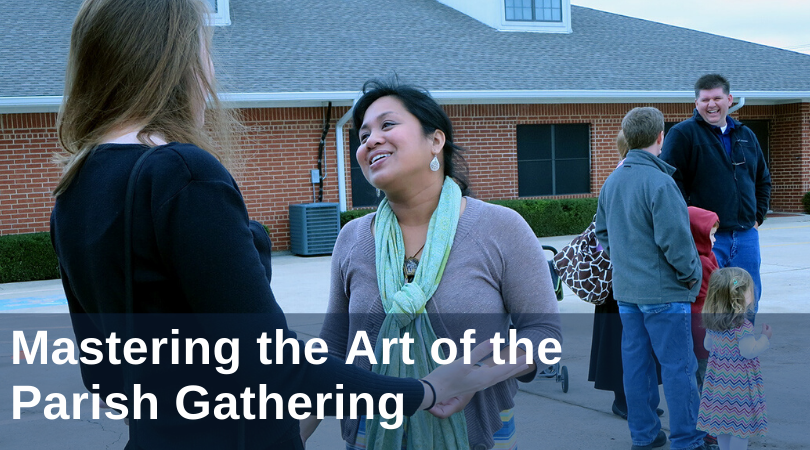
I have a confession to make: I attended the same parish for three years during graduate school and never learned a single fellow parishioner’s name. I loved going to Mass there, but I never attended a parish function or lingered after a service to talk to fellow worshipers.
Not surprisingly, I did not see myself as connected to my faith community, so now that I work in a parish, one of my priorities is to offer effective parish gatherings that can cultivate unity among parishioners who might not otherwise see themselves as connected to others in the community. Surprisingly, Priya Parker’s book The Art of Gathering: How We Meet and Why It Matters—a book that has nothing to do with parish ministry—offered me several insights on how to do this.
1. Prioritize introductions.
At a recent semi-annual lunch and discussion that my parish hosts for senior citizens, I was surprised to overhear two people introducing themselves to one another. I could not believe that these two long-time and involved parishioners had not met before. When I expressed my shock, the two individuals laughed and replied that one goes to the 7:30 a.m. Mass, whereas the other attends at noon. They’ve never crossed paths.
This experience reminded me that I should never assume that people know one another, and should therefore help people get to know one another at parish functions. In Parker’s words, “Connection doesn’t happen on its own. You have to design your gatherings for the kinds of connections you want to create." Connection can look different, depending on the type of event—for example, greet people at the door at a weekly coffee hour, ask them to wear a name tag, and encourage them to meet one new person that morning. Or, at a program where fewer people attend, form a large circle and ask everyone to share their name and what brought them to the event. At a larger or more formal gathering—say, a lecture or a parent meeting—ask people to turn to their neighbors and answer an icebreaker question after introducing themselves.
These are easy things to do, and they help establish personal connections, which is often the starting point to feeling as if a place where you go once or twice a week is actually a community.
2. Make all moments of the gathering matter.
Most of my agendas for events or classes have the same building blocks, with some variety depending on the context: welcome, introductions, icebreaker, the main talk or presentation, small group discussion, large group discussion, closing prayer.
Parker got me thinking “outside the box.” She states: “Hosts often don’t realize that there tends to be unfilled, unseized time between guests’ arrival and the formal bell-ringing, glass-clinking, or other form of opening. Make use of this no-man’s-land.” For example, the time between the first guest’s arrival and the official opening of an event could be a great time to help attendees get to know one another. Print and post thought-provoking conversation starters around the room (e.g., “What one word would you use to describe your past year?” “Would you rather go back in time by five years or jump forward by five years?”), and encourage attendees to discuss the questions with new faces.
3. Open and close gatherings with gusto.
Audiences disproportionately remember the first 5 percent, the last 5 percent, and a climactic moment of a talk. Parker believes that gatherings work the same way, yet we often put most of our preparation into the main presentation and activities, then give the same generic welcome and closing.
Parker offers two tips for making a more impactful closing. First, direct participants to reflect. What happened during the gathering? Why does it matter? What was learned? Next, invite participants to consider their key takeaways from the event, and how those will impact their work, family, spiritual, or emotional lives going forward.
In a way, Parker’s suggestion reminds me of the way in which the Catholic Mass closes: “Go in peace, to love and serve the Lord.” Ultimately, the gathering, whether it be Mass or something else, isn’t supposed to stop at the formal conclusion. It’s meant to change our hearts and minds so that we leave it more equipped to bring Christ into the world.
Featured image: Mater Dei Latin Mass Parish; CC-BY-NC-ND-2.0.


